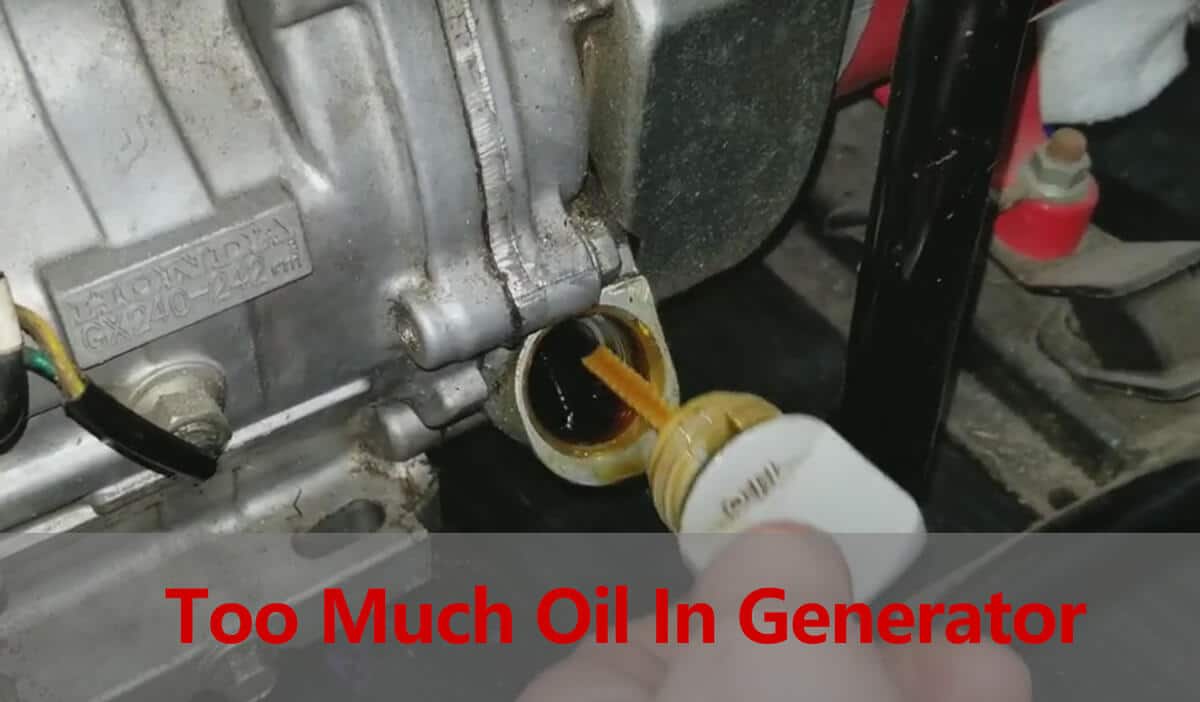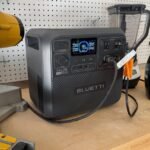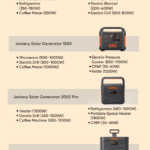Disclosure: This post contains affiliate links and I will be compensated if you make a purchase after clicking through my links. Learn More
Too much oil in a generator can cause problems. It affects performance and can lead to damage.
Fixing this issue is crucial for smooth operation. Generators are essential for backup power. But, maintaining them properly is vital. Too much oil can lead to engine issues, such as overheating or smoking. This guide will help you address the problem.
We’ll explore simple steps to correct the oil level in your generator. With a bit of effort, you can ensure your generator runs efficiently. Proper maintenance saves time and money, keeping your equipment in top shape. Let’s dive into the process of fixing excess oil in your generator.

Credit: www.bisonindustry.com
Identifying The Issue
Excess oil in a generator can cause performance issues. Check the oil level with the dipstick. Remove excess oil to prevent engine damage.
Generators need the right amount of oil to work well. Too much oil can cause problems. It is important to know the signs and causes.
Signs Of Too Much Oil
First, the generator may smoke. This smoke can be blue or white. Another sign is oil leaks. You might see oil on the ground or parts of the generator. The engine might also run rough. It could stall or sound strange.
Common Causes
One common cause is overfilling. Sometimes, people add too much oil by mistake. Another cause can be a faulty oil gauge. If the gauge is broken, it may show the wrong oil level. Lastly, the generator might be tilted. If it is not on a level surface, oil can move to one side.
“`

Credit: www.youtube.com
Preparing For The Fix
Fixing too much oil in a generator requires careful preparation. Being ready before starting the fix ensures a smooth process. This guide will help you gather the necessary tools and ensure safety measures.
Gather Necessary Tools
Start by gathering all tools you will need. You might need a wrench, oil pan, and gloves. Make sure you have these items handy. Having the right tools will make the job easier.
Ensure Safety Measures
Safety is very important. Wear protective gloves to avoid skin contact with oil. Use safety goggles to protect your eyes. Ensure the generator is off and cool before starting. This prevents burns and accidents. Always work in a well-ventilated area. Avoid inhaling harmful fumes.
Draining Excess Oil
Too much oil in a generator can cause problems. Draining excess oil is a simple fix. Locate the drain plug, place a container underneath, and let the oil flow out until the correct level is reached.
Draining Excess Oil
Excess oil in your generator can lead to a variety of issues, including engine damage and reduced efficiency. Draining the extra oil is a simple process that anyone can do with the right tools and a bit of patience. It’s crucial to act quickly once you notice the problem to avoid long-term damage.
Locate The Drain Plug
First, find the drain plug on your generator. It’s typically at the bottom of the engine. If you’re unsure, refer to your generator’s manual for a detailed diagram. Knowing exactly where it is will save you a lot of time and frustration.
Proper Draining Technique
Once you’ve located the drain plug, place a container underneath to catch the oil. Use a wrench to carefully loosen the plug. Make sure you do this slowly to control the flow of oil. You don’t want to end up with a big mess.
Remember to let the oil drain completely. This may take a few minutes, so be patient. Once it’s done, tighten the drain plug securely. Double-check to ensure it’s tight enough to prevent leaks.
By following these steps, you can easily drain the excess oil from your generator. Have you ever had to drain oil from a generator? If so, what was your experience like? Share your tips and tricks in the comments!
Checking The Oil Level
Checking the oil level is crucial for maintaining your generator. Too much oil can cause problems. You need to check the oil level regularly. This section will guide you on how to do it right.
Use A Dipstick
First, find the dipstick on your generator. It is usually near the engine. Pull out the dipstick and wipe it clean. Insert it back into the oil tank. Then, pull it out again to check the oil level. The dipstick will show you how much oil is in the tank.
Correct Oil Level
The dipstick has markings that indicate the correct oil level. The oil should be between the “full” and “add” marks. If the oil is above the “full” mark, there is too much oil. You need to drain some oil to reach the correct level. If the oil is below the “add” mark, you need to add more oil. Always keep the oil level within the correct range.
Refilling With Correct Amount
Remove excess oil from the generator by draining it carefully. Refill with the correct amount to ensure smooth operation. Always check the oil level with the dipstick.
Refilling with Correct Amount
Ensuring your generator has the right amount of oil is crucial for its performance and longevity. Overfilling can lead to issues like engine wear and smoke. Here’s how to refill your generator with the correct amount of oil.
Choosing The Right Oil
First, pick the right oil for your generator. Refer to your generator’s manual for oil specifications.
Use oils labeled SAE 10W-30 or 15W-40 for most generators. These oils offer good performance in varied temperatures.
Avoid using automotive oils. They can harm your generator and reduce its lifespan.
Refill Procedure
Once you have the right oil, follow these steps to refill your generator:
1. Drain Excess Oil: If there’s too much oil, drain it first. Use a clean container to catch the oil.
2. Check Oil Level: Use the dipstick to check the oil level. Wipe it clean, insert, and remove to see the level.
3. Add Oil Gradually: Pour the oil slowly. Avoid overfilling. Recheck with the dipstick to ensure correct level.
Remember, adding too much oil can cause smoke and reduce efficiency. Measure carefully to keep your generator running smoothly.
Have you ever faced issues due to overfilling? Share your experience and tips in the comments!
Running The Generator
Running the generator properly is key to fixing too much oil. Follow these steps to ensure your generator runs smoothly and safely.
Initial Start-up
First, place the generator on a flat surface. This ensures oil levels are accurate. Check the oil level with the dipstick. If there’s too much oil, it can cause problems. Remove the excess oil until it reaches the recommended level.
Next, ensure the generator has enough fuel. A full tank helps maintain performance. Turn the fuel valve to the ‘on’ position. Finally, move the choke lever to the ‘start’ position. Now, pull the recoil starter cord. This should start the generator.
Monitoring Performance
Once the generator is running, keep an eye on its performance. Listen for unusual noises. These can signal issues. Check the oil level regularly. Too much oil can cause smoke and damage. Look at the exhaust. Excessive smoke means there’s too much oil.
If you see this, turn off the generator. Drain the excess oil immediately. Also, monitor the temperature. Overheating can indicate oil problems. Keep the generator in a well-ventilated area. This helps it stay cool and run efficiently.
Preventive Measures
Too much oil in a generator can cause smoking, leaks, and damage. Regularly check the oil level and drain excess oil. Ensure the generator is on a level surface.
Preventive Measures
Taking preventive measures is crucial in maintaining your generator’s health and performance. By implementing these steps, you can avoid the headache of dealing with too much oil in your generator. Let’s dive into some practical tips.
Regular Maintenance
Regular maintenance is key to preventing oil issues. Schedule routine check-ups for your generator. This will help you catch potential problems early.
Change the oil as recommended by the manufacturer. Old oil can become thick and cause overfilling. Regularly replacing it ensures your generator runs smoothly.
Keep an eye out for leaks. Small leaks can lead to significant problems if not addressed promptly. Regular inspections will help you spot these early.
Proper Oil Check
Checking the oil level properly is essential. Always use the dipstick to measure the oil. Ensure the generator is on a level surface for an accurate reading.
Avoid overfilling the oil. Too much oil can cause engine damage. Refer to your generator’s manual for the correct oil capacity.
Use the right type of oil. Different generators require different oils. Using the wrong one can lead to performance issues.
Remember, taking these preventive measures can save you time and money. Regular maintenance and proper oil checks are simple yet effective ways to keep your generator in top shape. What steps will you take to ensure your generator’s longevity?

Credit: generatorfixer.com
Troubleshooting
Excess oil in a generator can harm engine performance. Drain some oil using the drain plug or a siphon pump. Regularly check the oil level to avoid overfilling.
If you’ve noticed that your generator is not performing as expected, one common issue might be too much oil. This can lead to a range of problems, from excessive smoke to engine damage. Troubleshooting this issue is crucial to keep your generator running smoothly and efficiently.
Persistent Issues
Sometimes, even after addressing the oil level, your generator might still have problems. Is your generator still emitting smoke? This could indicate that excess oil has damaged the spark plug or air filter.
Check these components for signs of oil contamination. Clean or replace them if necessary. Consistent issues might mean that oil has seeped into other parts of the engine.
Pay attention to unusual noises or vibrations. They could hint at deeper mechanical problems caused by too much oil.
Seeking Professional Help
If troubleshooting on your own seems overwhelming, it might be time to seek professional help. Have you ever tried fixing something and ended up making it worse? Generators can be tricky.
A professional can diagnose the issue accurately. They have the tools and expertise to fix the problem without causing further damage. This could save you time and money in the long run.
Don’t hesitate to reach out to a certified technician. Sometimes, a small issue can escalate into a major problem if not handled correctly. Are you willing to risk it?
By addressing these troubleshooting steps, you ensure your generator’s longevity and efficiency. How have you handled generator issues in the past? Share your experiences and insights in the comments below!
Frequently Asked Questions
What Happens If I Overfill Oil In My Generator?
Overfilling oil in your generator can cause engine damage. Oil may enter the air filter, causing it to clog. This can lead to poor performance and increased emissions. Always follow the manufacturer’s oil level guidelines to avoid issues.
What To Do If You Accidentally Overfill Oil?
Drain the excess oil immediately. Use a suction pump or drain plug. Check the oil level again. Dispose of oil properly.
How Do You Fix Excess Oil?
To fix excess oil, blot with paper towels, use oil-absorbing sheets, or apply a mattifying primer. Adjust your skincare routine.
How To Get Oil Out Of A Generator?
To get oil out of a generator, place a container under the drain plug. Remove the plug and let the oil drain completely. Replace the plug and refill with new oil. Dispose of the old oil responsibly.
Final Words
Fixing too much oil in a generator is crucial. It prevents engine damage and costly repairs. Regular maintenance helps avoid oil issues. Check oil levels often. Follow the manufacturer’s guidelines. This ensures optimal performance. Remember, too much oil leads to problems.
Keeping the oil level balanced is key. It keeps your generator running smoothly. Act promptly when oil levels are high. Your generator will thank you. Proper care extends its life. Happy generating!








